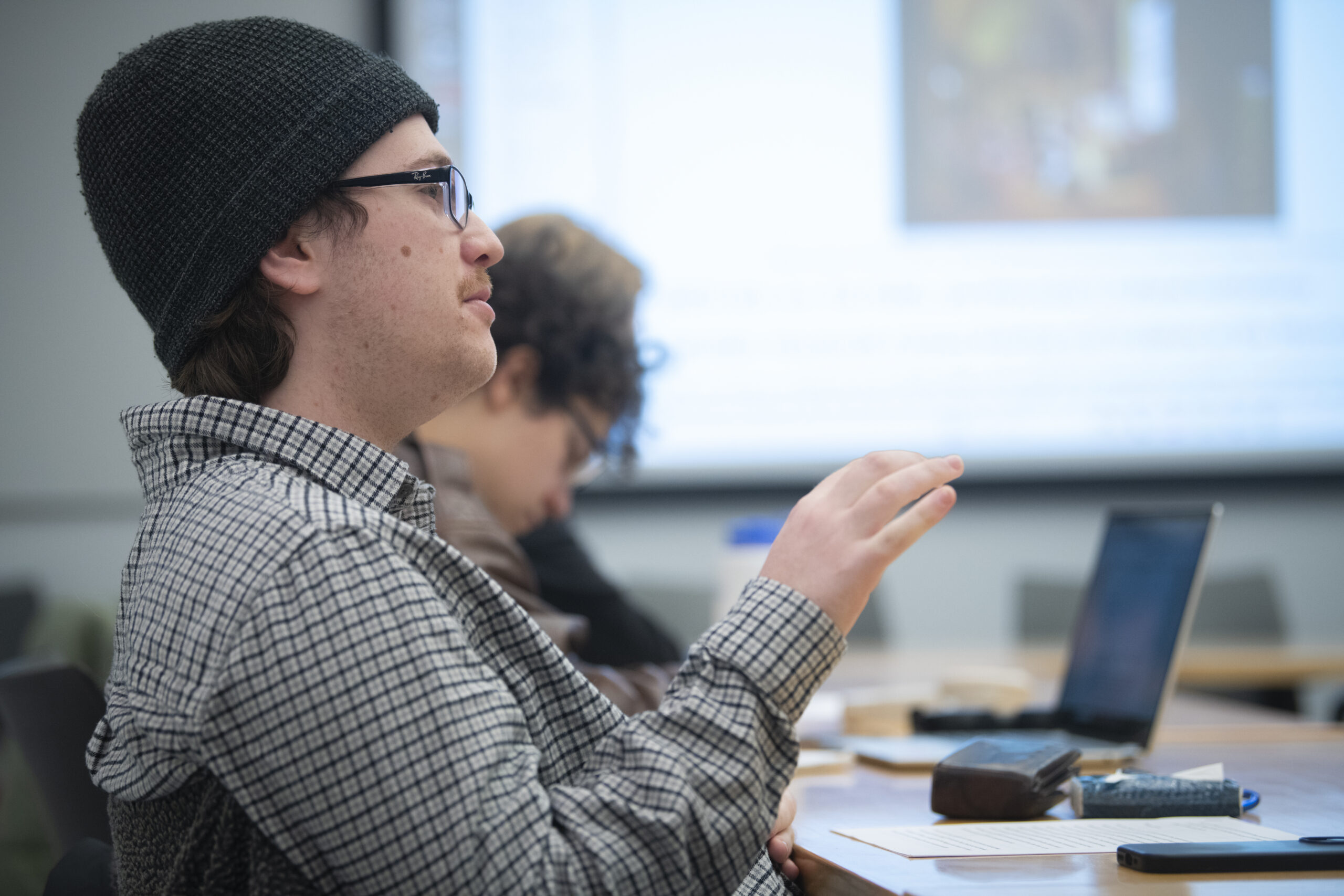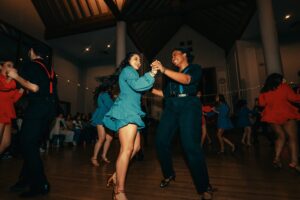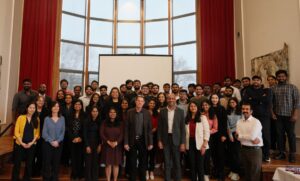Students employ audio to examine Worcester Art Museum works
Every fall, students in Professor Kristina Wilson’s Art, the Public, and Worcester’s Cultural Institutions course get a taste of what may be ahead for them if they seek marketing or museum careers.
The class, which is a Problem of Practice (PoP) course, offers a departure from more traditional course offerings by giving students the opportunity to produce episodes for the podcast “WAMxUniversity,” which focuses on the works inside the Worcester Art Museum. The podcasts are a part of WAM’s marketing efforts.
WAMxUniversity has become a staple of the art history program. This year, students are making podcasts about works in the museum’s 19th and 20th century American and European art collection, primarily scenic paintings and portraits.
Jemma Salisbury ’26 is studying “The Haygatherers” by Edward Mitchell Bannister from 1893, acquired by the museum in 2023. Salisbury says that exploring paintings through the podcast medium gives students an extended impact on Clark and art in Worcester and is an enduring record “of the love that we and the professors put into our work.”
Fellow art history major Carson Dobos ’25 agrees with the record-keeping benefits of the medium. He’s studying the portrait “Lady Warwick and Her Son,” a John Singer Sargent painting from 1905, acquired by the museum in 1913.
“For the class, we’ve had to go back and listen to prior students’ podcasts,” he says. “I’ve found myself hearing both familiar voices and not-so-familiar voices. It’s become an archive of all the art history students.”
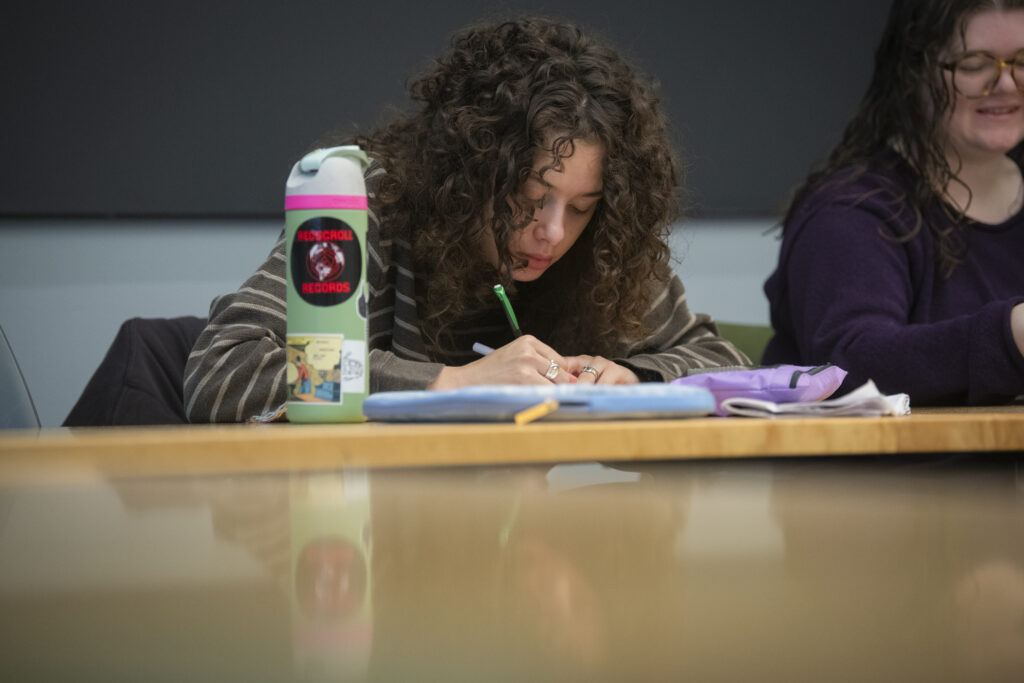
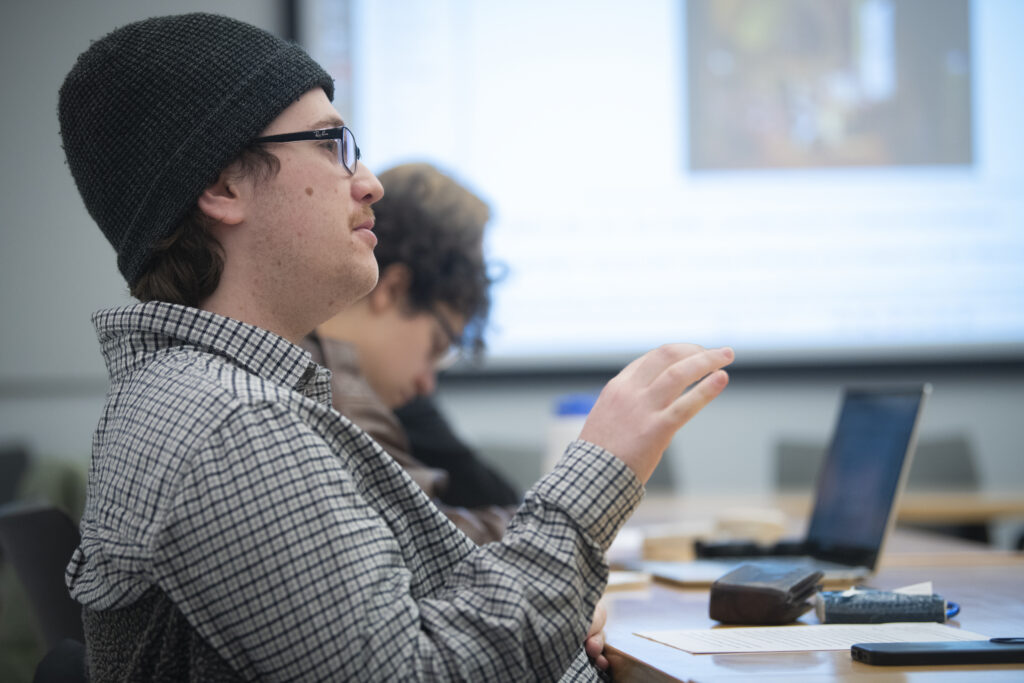
Both Dobos and Salisbury say they have learned an important lesson about art: that everything is up to interpretation and that context is crucial. This realization is a central aspect of the class, Wilson notes.
“Students are learning to develop a critical capacity to evaluate the material that they’re looking at and to then also use these findings to network to additional resources,” says Wilson, who is director of the art history program.
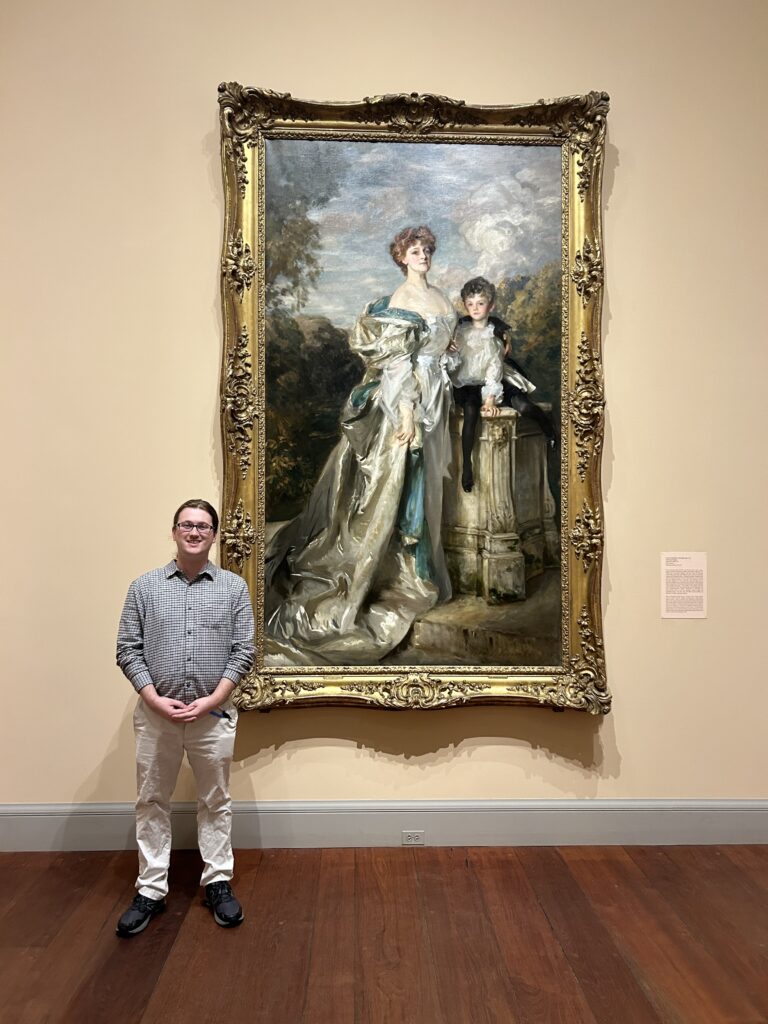
Wilson structures the semester into halves. To start, students read museum theory, search through object files, and hear lectures from museum and arts professionals. This year the class featured presentations by curatorial assistant Delaney Keenan, provenance research specialist Daniel Healey, digital content specialist Zachary Critchley, and the curator of American art, Karen Sherry, all from the Worcester Art Museum, as well as Liza French, a community engagement specialist and podcast producer for the City of Worcester. The goal is to build confidence among students around a field they could enter post-graduation.
The second half of the class focuses largely on the writing and recording of the podcast scripts, with students learning best practices for the use of recording technology and critical techniques for making spoken scripts flow well and sound professional.
According to Wilson, the podcasts that generally have the most listenership are those with strong opinions and positions about the pieces, which emboldens students to use their voices and take a stand on their chosen subjects. For the Worcester Art Museum, the episodes are a wonderful expansion of the institution’s mission, she says.
“It brings more voices into the spaces of their galleries,” Wilson says. “This is an opportunity for the museum to demonstrate the variety, depth, breadth, and diversity of viewpoints about the art that they have in their collection, and to invite a broader dialogue, community-wide, about the art.”
Through the course, Wilson hopes to instill a similar sense of empowerment that she felt as an undergraduate art history student, specifically with two moments that she feels defined her confidence in her work.
“One of these moments was a realization that, wow, I really knew the literature; and the other was that I had a deep creative idea about a topic. I wanted the students to have that experience as well. To me, it’s a very important thing,” says Wilson, whose research on modernism gives attention to underrepresented designers in New York City.
Wilson notes that the broader impact of the class and podcast project is that they offer students additional lenses through which to assess art and a forum to ask fresh questions.
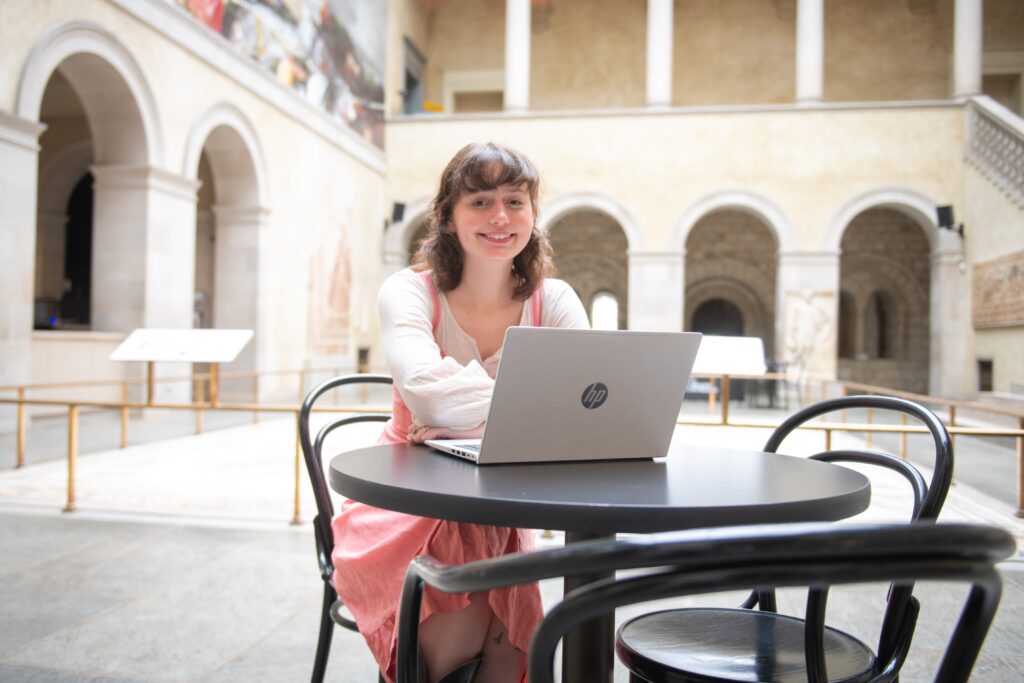
A note from the author:
I took this course in fall 2023 and created Episode 28 of the WAMxUniversity podcast. My episode focused on the photo “Cola Sea” by Barbara Ciurej and Lindsay Lochman. This piece was featured in the New Terrain: 21st Century Landscape Photography exhibit at the Worcester Art Museum, which was on view from April 6 to July 7, 2024. Making the podcast gave me a good grasp on what kind of capacity I’d like to work in at a museum.


